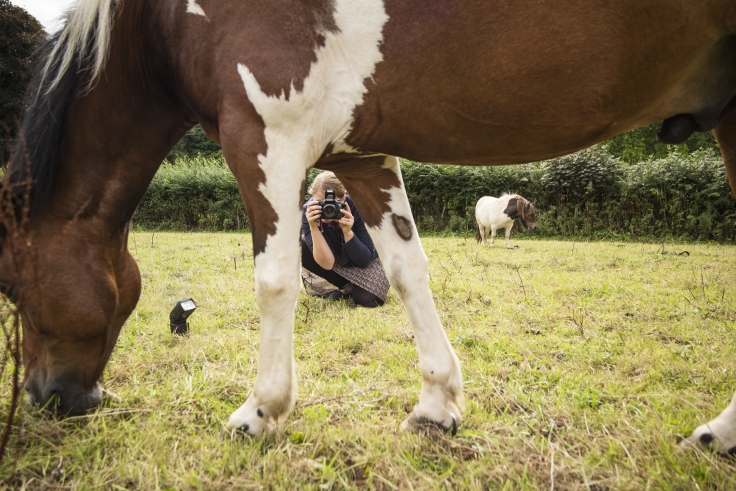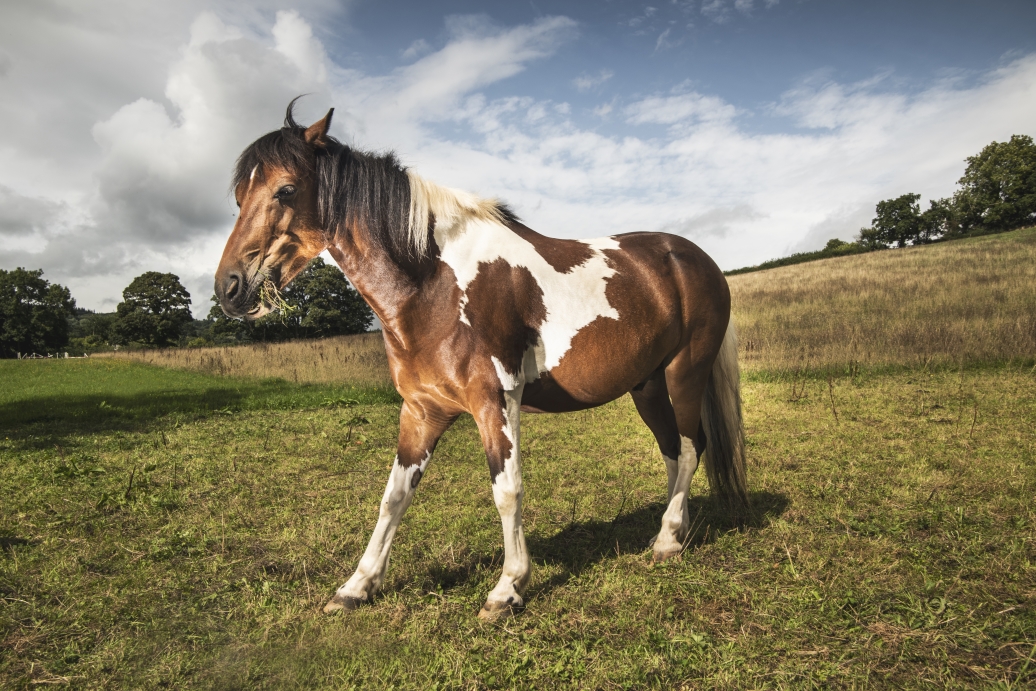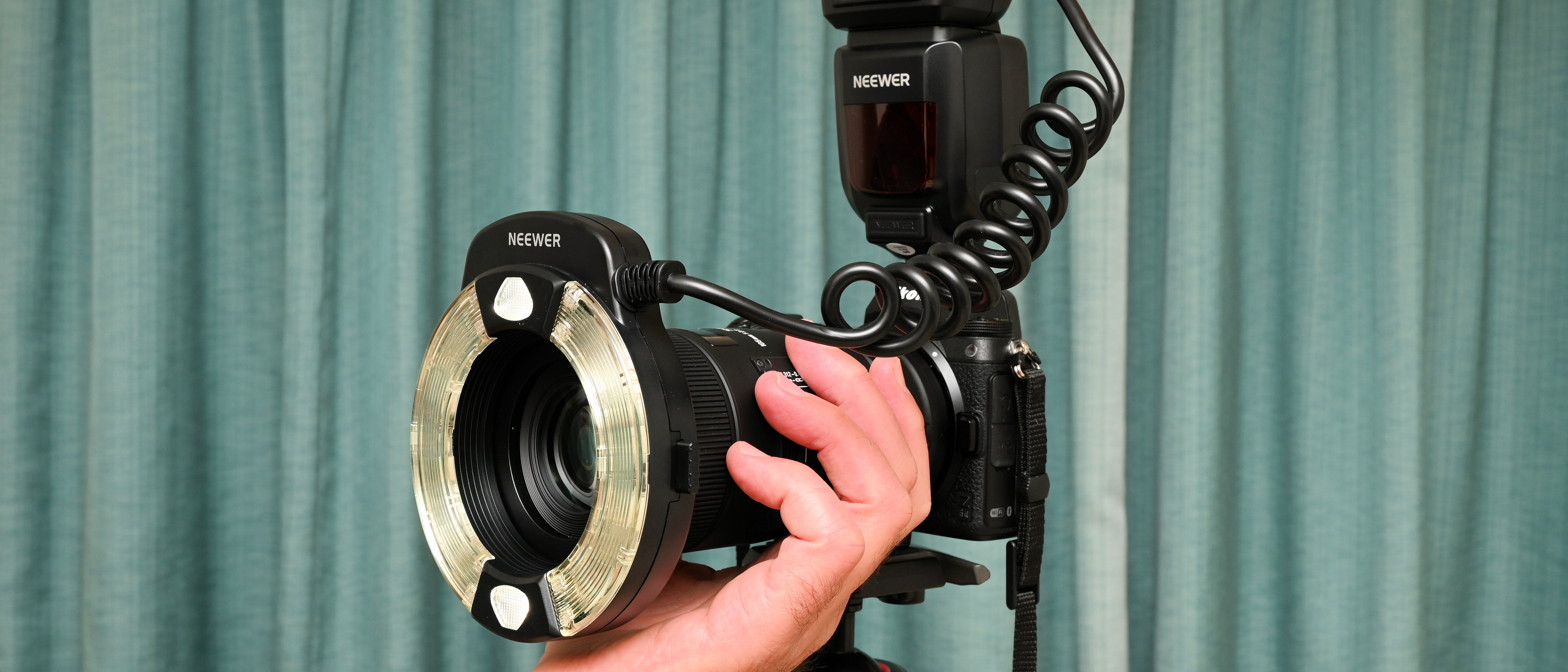How to get perfect pictures of horses
Master horse photography and capture elegant horse face portraits

Like photographing any animal, taking pictures of horses comes with its challenges. Capturing a horse's long face or shooting them out in the field are both trickier than they look.
If you want to try this for yourself, you will need a pair of helping hands – and a bit of patience too, as the horse might not always look or perform as you want it too.
The horse in our photoshoot is called Rocky, and he was a gem to work with. His owner Alice was on hand to help position him and to generally keep him happy with strokes and treats.
When it comes to finding the ideal location, look no further than the stables. By bringing the horse out into the doorway and using natural light, you can get a great result. Set your exposure to read from the horse; as there is less light in the background, it will darken down anyway.
For our horse shoot we used a mixture of natural light and flash light. Before using flash, though, it’s a really good idea to check with the owner that the horse won’t be scared by the light.
Their safety and well-being should come before anything else. It also helps to spend a bit of time at the beginning bonding with the horse, showing it your camera and making it comfortable in your presence before you start shooting.

Camera settings
If you’re using flash, you’ll need to sync your shutter speed with the flashlight. This means you’ll need to select a shutter speed of 1/200 sec or slower. You can then balance your ISO, aperture, and flash setting to the ambient light. We placed the flashgun slightly to the side and behind Rocky for a dramatic result.
The best camera deals, reviews, product advice, and unmissable photography news, direct to your inbox!
Flash assist
If you are going to shoot using flash, it can help to get an assistant to hold the flashgun rather than placing it on a stand. That way you don’t need to worry about the horse knocking it over as it moves around. Being flexible and directing your assistant where to fire the flash from is crucial. Make sure the sensor from your flashgun is in line with your camera so it will fire.
Right pose

Timing is everything! Be prepared to keep shooting, as you’re unlikely to get it right first time. A horse indicates happiness by pointing its ears forward, so aim to capture this in camera. You’ll also need to direct the owner to keep repositioning the horse into the light, as it won’t stay still for long.
Flash sync time
We often say that the shutter speed needs to sync with the flashlight when you use flash on a shoot – but what exactly does this mean? In a nutshell, you should always aim to use a shutter speed of 1/200 sec or slower, so that the light from the flash has time to reach the sensor on the camera before it closes.
The reason why this matters is that DSLRs use a focal plane shutter system, with a front and rear curtain. When you press the shutter button, the front opens first, followed by the rear. If the shutter speed was too fast, the flash light would only reach some of the sensor, and you’d have a black bar across your image.
Out in the field

After we finished in the stables, we headed out into the field. The conditions on this day were perfect with blue sky, clouds and green grass. As in the stables, we used persistence to get the shot. It can be tricky to see whether your flashlight has fired in daylight, but when you get it right the results are worth it. We lit the horse from the front and slightly to the side. Using fl ash lifts it away out from the background and highlights the horses’ muscles.
Read more:
Wildlife and nature photography tips
How to reshape photos of wildlife and pets
The sister print publication to this website, Digital Camera Magazine is Britain's best-selling photography publication – and it can also be purchased outside the United Kingdom as Digital Camera World.
Digital Camera Magazine is packed with more expert advice and more inspirational images than any other title, with the sole aim of helping you become a better photographer. Every issue we also bring you a selection of great gifts which are designed to help you get more from your photography – everything from tips cards and cheat sheets to free software and bookazines.
In addition to inspirational images, interviews, projects, mini tests and tutorials, each issue is packed with news, reviews and comparisons, as well as photographer vs photographer shootouts and head-to-head challenges using the best photo editing software.
The magazine is captained by Editor Niall Hampton.

